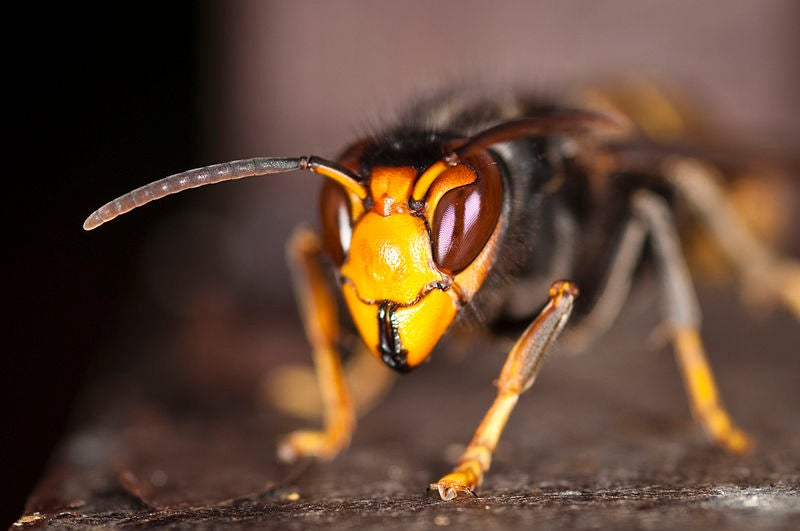Deadly Asian Hornet 'seen in Scotland', yet not is all as it seems
Defra believes otherwise as not one official sighting of the Asian Hornet has been verified in the UK (picture: Danel Solabarrieta)

Your support helps us to tell the story
This election is still a dead heat, according to most polls. In a fight with such wafer-thin margins, we need reporters on the ground talking to the people Trump and Harris are courting. Your support allows us to keep sending journalists to the story.
The Independent is trusted by 27 million Americans from across the entire political spectrum every month. Unlike many other quality news outlets, we choose not to lock you out of our reporting and analysis with paywalls. But quality journalism must still be paid for.
Help us keep bring these critical stories to light. Your support makes all the difference.
A species of aggressive hornet not native to the UK has reportedly been spotted in Scotland – or has it?
Workmen in Fife were shocked to discover what they say was an insect “two to three inches long” with a sting “the length of a needle.”
Asian hornets (Vespa velutina) are predators originally from China, which were introduced to the south of France within a delivery of pottery in late 2004.
The species has killed six people in France since its arrival, having caused an anaphylactic shock in its victims - its sting is slightly fouler solely due to its size, which is larger than a normal bee.
However, it is a much larger threat to the honey bee – causing significant losses to colonies.
It can grow up to 3cm and has a black/dark brown thorax.
Considering that Andrew Allan, 30, from East Kilbride, said he saw a hornet considerably larger than the one feared to be making its way towards the Channel, it’s more likely he saw its larger European equivalent - the “hornet” (Vespa crabro) or a Horntail.
He told the Daily Record: “We were just working away, doing some stone repairs, when we saw this massive thing buzzing about. I could not believe my eyes. My mate didn’t want to take any chances so he hit it with a hammer.”
A spokeswoman for The Department for Environment, Food and Rural Affairs (Defra) told The Independent: “It’s very unlikely that [the Asian Hornet] would be in Scotland.
“We’d had quite a lot of reports from the public of Asian Hornets but not a single case. We’ve not had an Asian Hornet in the UK yet.”
She added that alerting beekeepers to the possible arrival of Asian Hornets had led a flurry of worried homeowners getting concerned that they, too, had spotted one.
In addition, a deadlier species - the extremely venomous Asian giant hornet (Vespa mandarinia) – has not set foot in Europe at all, she confirmed.
Since arriving in France the Asian Hornet has been “rapidly extending its range,” the British Non-Native Special Secretariat (NNSS) says.
It is considered merely a matter of time before the species arrives in the UK, with a high possibility of introduction through cut flowers, fruit or on un-treated timber. The NNSS also said that it there is a chance it could simply fly across the Channel.
Because the invasive insect can cause widespread damage to bee colonies, bee-keeping organisations and governmental departments are still urging members of the public to report sightings of the virulent species.
“Do not under any circumstances disturb or provoke an active hornets’ nest,” the British Beekeepers Association, says.
An April report by the Environmental Audit Committee says: “Niall Moore [from the NNSS]… told us that the Non-native Species Secretariat was helping the Environment Agency and Natural England to develop Rapid Response Plans for species, as well as contingency plans for the arrival of the Asian Hornet.”
Subscribe to Independent Premium to bookmark this article
Want to bookmark your favourite articles and stories to read or reference later? Start your Independent Premium subscription today.
Join our commenting forum
Join thought-provoking conversations, follow other Independent readers and see their replies
Comments